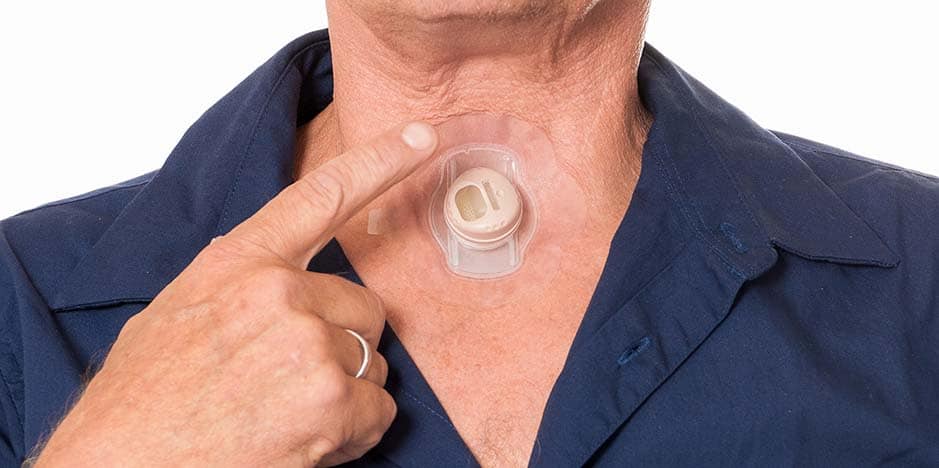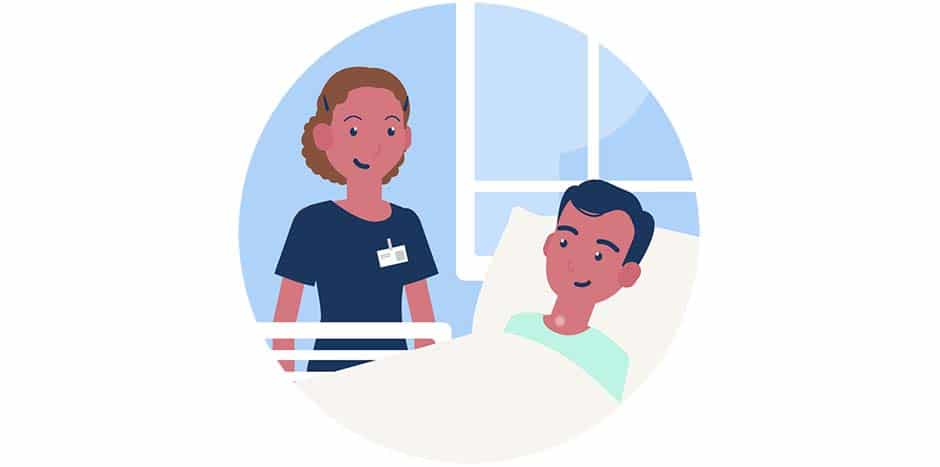Articles & Blog posts
Easy access
Make sure you can always access your favourite content by connecting My Content to your email.
Connect my emailAlready connected?
If you have already connected My Content to your email all you need to do is verify your email.
Verify my email27 February 2023
Learn how to breathe after surgery

You may be wondering how a laryngectomy will affect your breathing.
The procedure redirects your windpipe to the hole in your neck so you will no longer be drawing air in through your mouth and nose as you always have. Instead, the air is inhaled and exhaled through your stoma.
Your lungs will operate as normal, but breathing through an open stoma causes the temperature and humidity in your lungs to drop. The lungs react to this by producing more mucus, meaning you will have to cough more. This means you will have to protect and humidify your lungs by wearing a Heat and Moisture Exchanger (HME).
Your new nose
Heat and Moisture Exchangers (HMEs) have been developed to compensate for the lost functions of your nose. An HME sits over the opening in your neck, and they help to reduce mucus production and coughing by humidifying and filtering the air you inhale and exhale.



